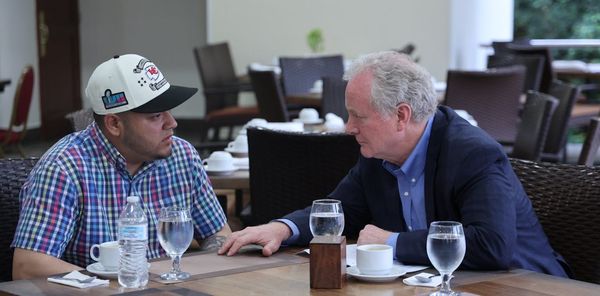Technologies that best support education share some key characteristics: they are open-ended, encouraging of imagination and creativity and are easily handed over to young people as vehicles for their own learning.
Such virtues are recurring threads when it comes to the following innovations, some of which will be on display for the first time at this year's Bett education technology show (Olympia, London, 12-15 January).
The multiple prize-winning Land of Me will be exhibiting the latest "chapters" of its highly interactive software, originally geared to pre-schoolers but now picking up a following at key stage one, which encompasses pupils aged between five and seven.
"We have just launched a story-telling unit in which children have complete control over the ingredients and direction of the narrative," says James Huggins, managing director of Made in Me, which publishes the software.
This year, apps may truly enter the classroom. Games-in-education-guru Tim Rylands has been wowed by Epic Citadel and its succession of highly textured medieval landscapes. "I've used it to weave some compelling stories," he says.
Liberating resource
In Nottingham, e-learning consultant David Ellis applauds the app TrashTalker, which enables the user to import an image of any face – cartoon or real – and then have its features and lips synch with a recording of their own voice.
"Marketed as fun, it's also a liberating resource for children with special needs ranging from autism to extreme shyness," says Ellis.
Meanwhile, his colleague James Hancock has been working with ICT students at Djanogly City Academy using GameSalad to create their own apps. (For more app ideas see the panel, below.)
At Parkside Academy in Cambridge, advanced skills teacher James Durran and the Institute of Education's professor of media education, Andrew Burn, recently used a piece of well-established software, Mission Maker, to encourage key stage three students to dovetail its game creation functionality with their studies of Shakespeare's The Tempest.
"It marked, for me, an interesting way of putting an established bit of kit to new use," says Durran.
The same creativity is emerging from teachers' use of a variety of online learning environments and blogs. At Wroxham Primary school in Potters Bar, Hertfordshire, ICT specialist Roger Billing is a fan of WordPress blogs. Each class uses the site to capture its latest experiences.
"Even more exciting is soon we will be handing over responsibility for a discreet children's blog to a team of year five pupils," Billing says.
Similar sharing has been encouraged at Rosebery school in Surrey by history teacher James South. He uses free PBworksite space to create a mini-VLE (virtual learning environment) where students are encouraged to create a collection of wikis, which are websites that are easily edited by users, exploring key events and people associated with important historic moments.
South explains: "It's proved a great source of encouragement to students who can find getting started on essays challenging."
Music teacher Louise Dorrian at Lodge Park Technology College in Corby, Northamptonshire, has also had success with a WordPress blog, which she uses to celebrate her pupils' achievements and encourage parents to share their own music-making experiences.
"The site has been helpful in explaining a project using the Xbox 360 Lips game to encourage singing among my year sevens," she says.
"The great thing with the Lips work is that everyone felt they could take part," adds 12-year-old Jake Hampton.
Dorrian has also been using free Microsoft software called Songsmith to place backing tracks behind pupils' songs – "It deserves wide application, helping pupils create songs as revision aids in other subjects," she says.
Campaigning and global themes are also being well-served by new technologies. For example, Aimee Barton, an assistant head at Bedford Primary in Bootle, will be speaking at Bett about her use of Radiowaves, moderated school broadcasting software. She used it to bring the experiences of a group of children on a recent visit to Chongquing in south-west China home to the entire school community via daily video newscasts.
"Some of them attracted over 2,000 viewings," she says. "Impressive parental interest given we only have 450 children at the school!"
Campaigning is also at the heart of Battlefront, an example of Channel 4 Education's fulfilment of its educational remit via social networking and websites rather than conventional school TV delivery. The site is home to 12 inspirational teenage campaigners.
One of them is Kaya Cheyanne, who is eager to expose the airbrushed images that dominate the fashion world and fuel many young people's impossible body image expectations.
"It was prompted by a nine-year-old I know complaining about their weight," she says.
Kaya's campaign will benefit later in 2011 from Channel 4 Education's Cover Girl – an online game aimed at girls aged 12 and above, who are cast in the role of desk artists responsible for photographically manipulating and "enhancing" a succession of models' photographs.







